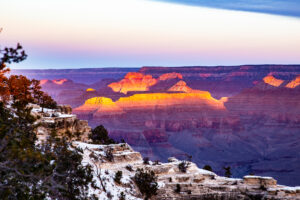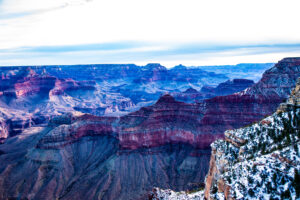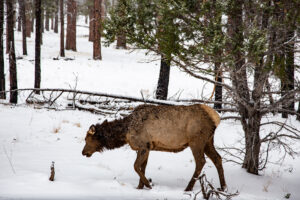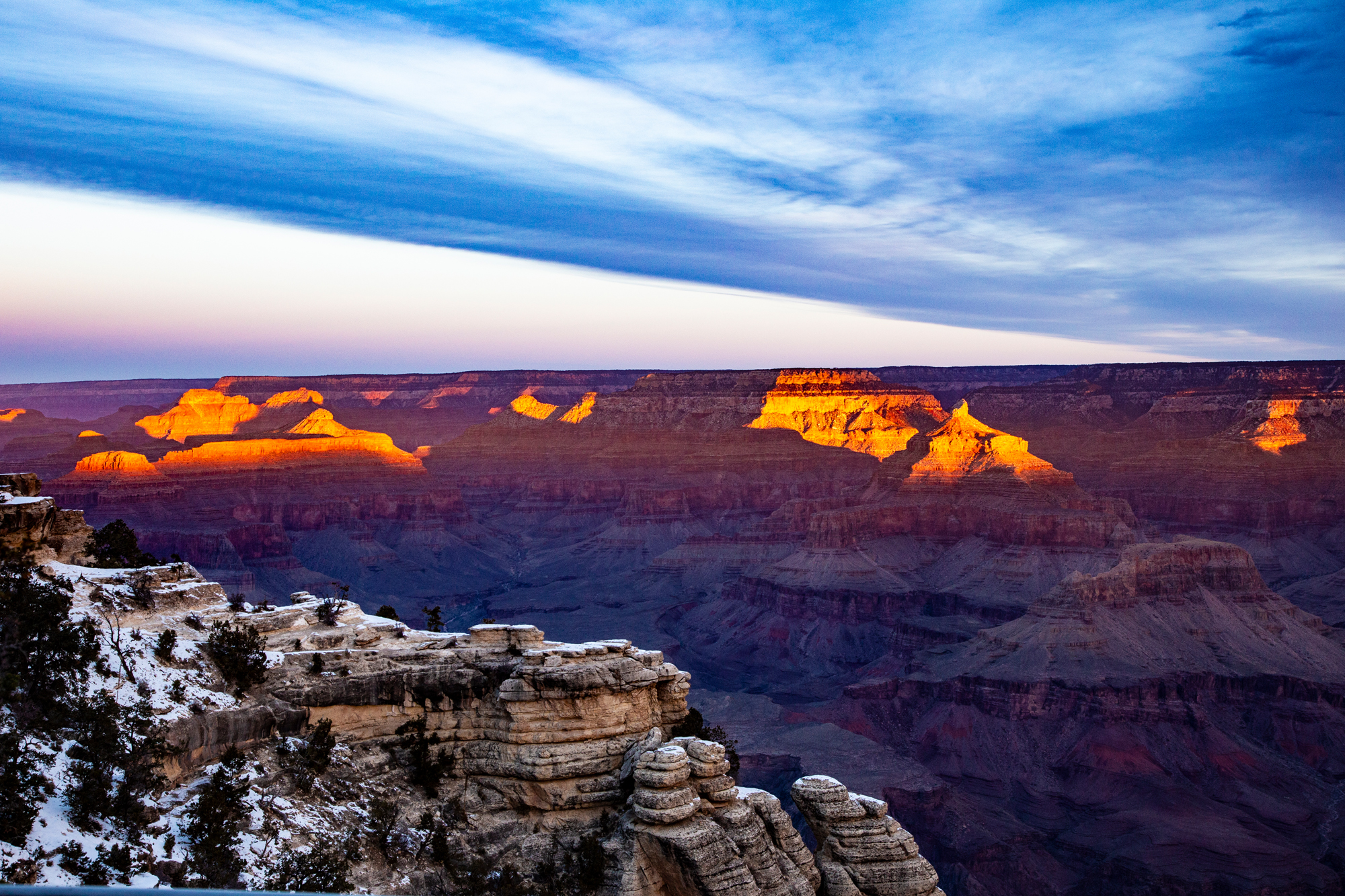The best time of year to visit the Grand Canyon varies.
It depends on personal preferences and what you want to see and experience. Think about lots of different experiences. Do you like cold temperatures? Are warm temperatures more important to you? Do you want to see snow? Who are you traveling with? And, don’t forget your camera….the photographs will be priceless. Click here to see a list of my recommended cameras.
Here are some ideas for you to consider at different times of year.
Spring (March to May):
Spring offers mild temperatures and blooming wildflowers. The park is home to hundreds of flowering plants including evening primrose, baby white aster, white violet, ground cherry, Indian paintbrush, and Rocky Mountain iris.
Many time in the Spring, baby wildlife will be prevalent. Elk, mountain sheep and other babies may be spotted.
The days are longer and outdoor activities are abundant. It’s a great time for hiking and outdoor activities. However, keep in mind that spring break may be very busy, so the park could get very crowded.
Summer (June to August)
Summer is the peak tourist season at the Grand Canyon. The weather is hot, especially at the lower elevations, so be prepared for high temperatures.
So while summer days can find average temperatures in the 80s, at night those temperatures can drop down into the 40s. You won’t need a heater; you’ll need a blanket.
The visitor center is a great place to start. With maps available and lots of staff, you will find great information on how and where to see the park.
It’s advisable to visit in the early morning or late afternoon to avoid the heat. One of the recommended ideas is to sightsee in the morning, grab a bite to eat in the early afternoon, have a short time of rest and head back out to view the park in the late afternoon. This will help you and your family make most of your time.
Grand Canyon National Park Lodges states:
“Longer hours of daylight ensure more time to enjoy Grand Canyon. Compared to less than 10 hours of daylight on the Dec. 21 winter solstice, in the summertime you’ll enjoy a surplus of daylight — nearly 15 hours of sunshine at its peak on the June 21 summer solstice.
Those five extra hours can be filled with an array of activities which, in the summertime, should include watching Grand Canyon illuminated by the dawn’s early light. Rise early and step aboard a shuttle for the Sunrise Tour, which departs 30 minutes before daybreak. After a guided tour to your viewing point at Hermit’s Rest, you’ll look east across the canyon and witness the first rays of daylight breaking over the rim. It’s a wonderful way to kick off one of the longest days of the year.”
Popular viewpoints and trails can be crowded during this time.
Fall (September to November):
Some consider the fall their most favorite time to visit the Grand Canyon. With children and College students back in school, you will find the Canyon less crowded and more accessible. Fall brings pleasant temperatures and beautiful foliage as the leaves change colors. The Aspens are literally alive with gold color and shimmering leaves.
You may also find it easier to book a room at your favorite resort. Rather than making reservations a year in advance, there might be a choice room available even a few weeks in advance.
You will be sure to enjoy hiking, wildlife viewing, and stunning sunsets. Take a jacket. Even though temperatures are mild, it can get a little chilly in the early morning and the evening.
Winter (December to February):
Winter sees fewer visitors, and if you enjoy a quieter experience, this might be the best time for you. In fact, this is the time of year that my family chose to visit the Park. Below you will see some of the photographs from that adventure. However, the North Rim is closed during this season, and the South Rim can experience cold temperatures and occasional snowfall. Some facilities and services might have reduced hours or closures.
Visit the Grand Canyon states:
WINTER HIKES
- Bright Angel Trail: One of the most popular trails at South Rim is the Bright Angel Trail. While open in the winter, this trail is famous for its drop-offs. You will likely encounter slick snow and ice for at least the first few miles.
- Hermit Trail is your best bet when avoiding walking on ice, as it descends from a point lower than 7,000 feet of elevation. There will be snow and ice initially, but this will end quickly as you get more into the Canyon.
- South to North Time Hike: You may decide to hike from South Rim to North Rim and back. This extreme multi-day journey takes much planning and preparation, especially in winter.
- Shoshone Point: An unsigned dirt parking area marks the trail out to Shoshone Point. An easy one-mile walk along an old dirt road takes one through ponderosa forest, which eventually transitions to a pinyon-juniper woodland near the Canyon’s rim. A relatively quiet viewpoint along the perimeter of the Canyon facing north-northeast awaits at the end of the walk.






It’s important to note that the North Rim and South Rim have different weather patterns and operating schedules. The North Rim is higher in elevation and has a shorter visiting season, usually from mid-May to mid-October.
Consider checking the official Grand Canyon National Park website or contacting the park directly for up-to-date information on weather conditions, closures, and any special events during your intended visit.


